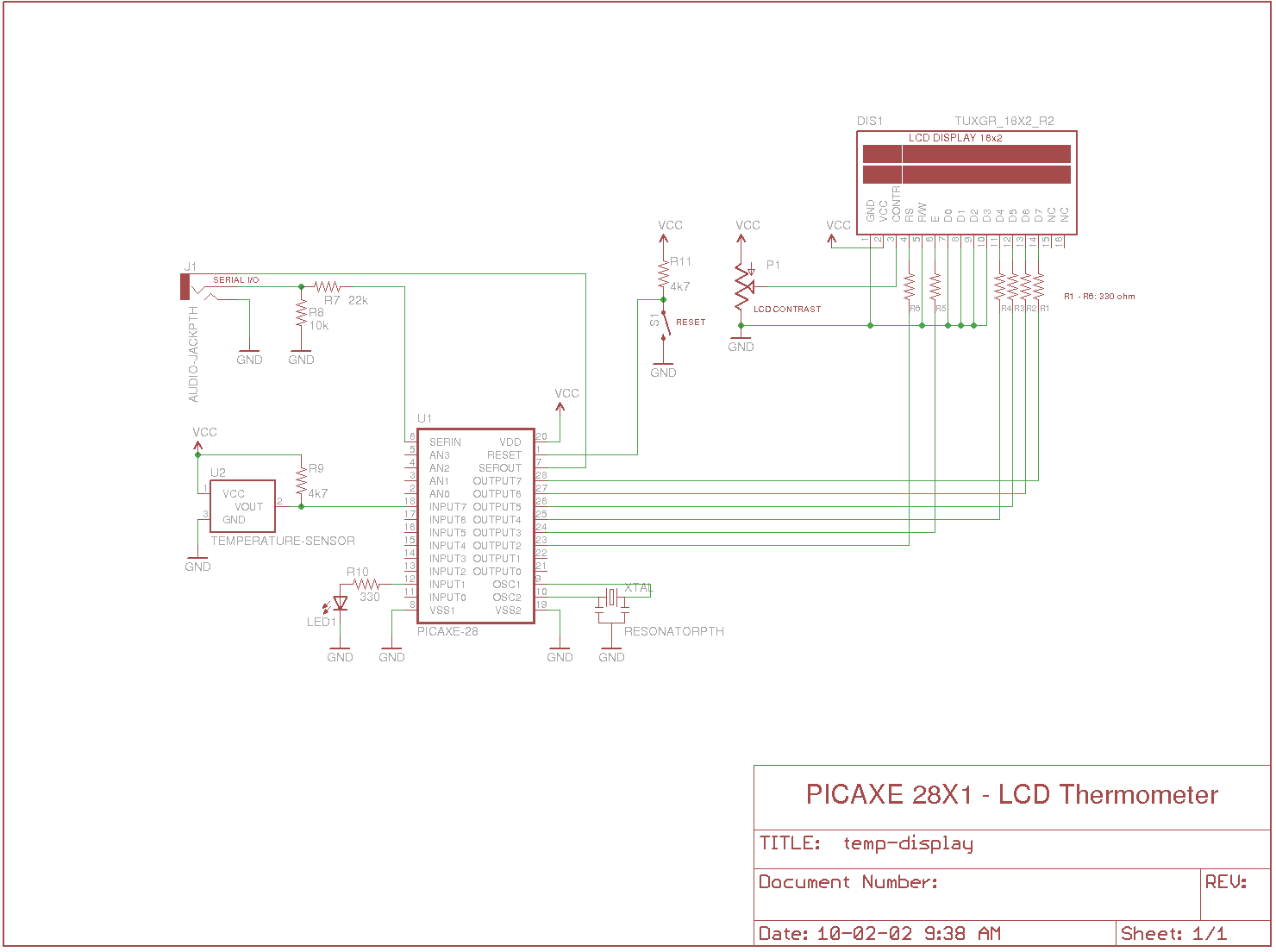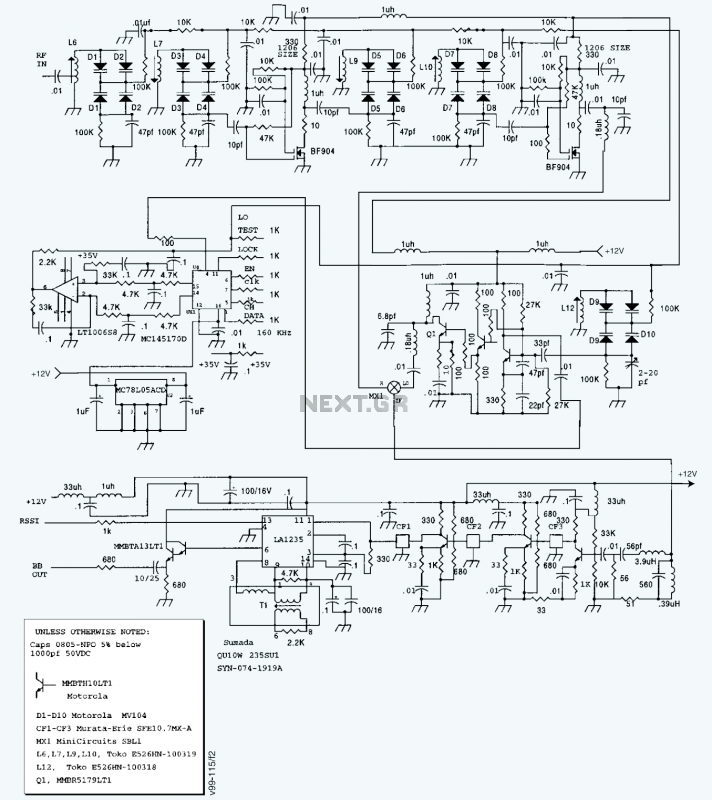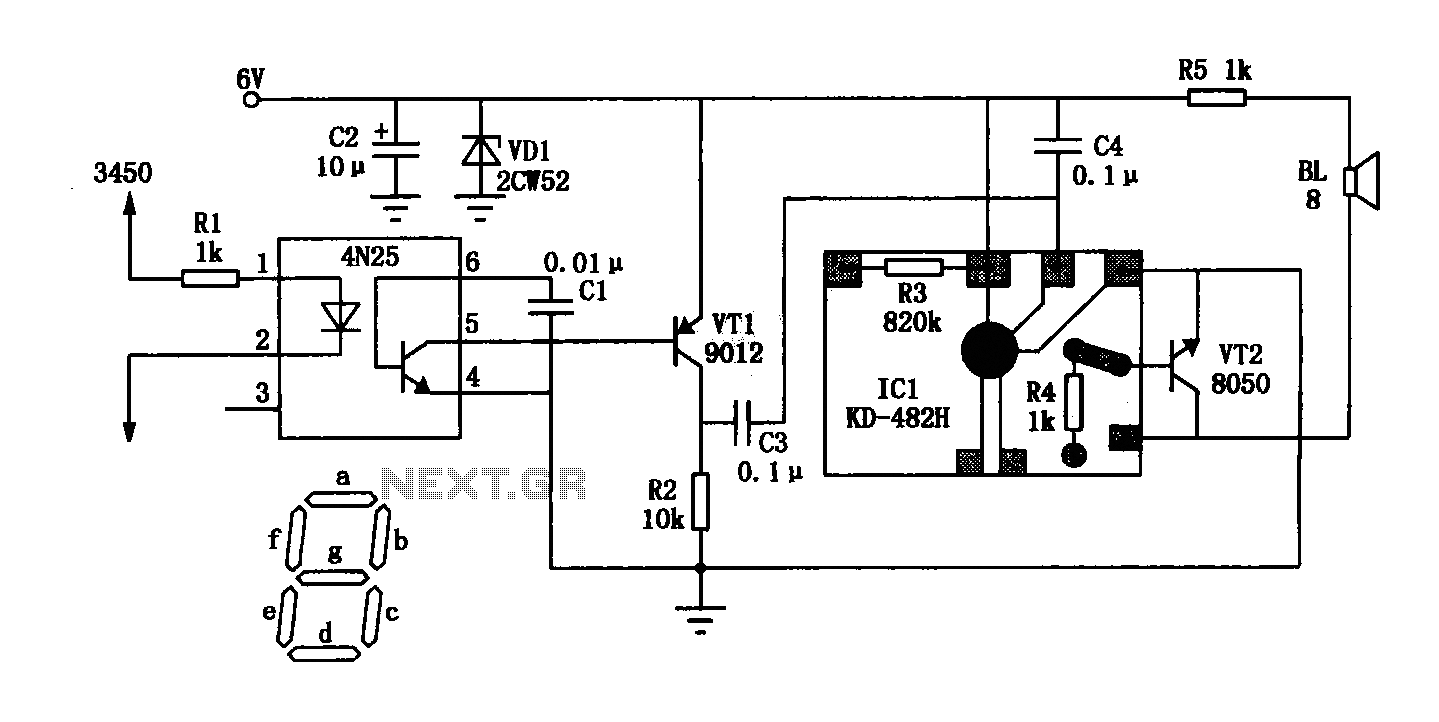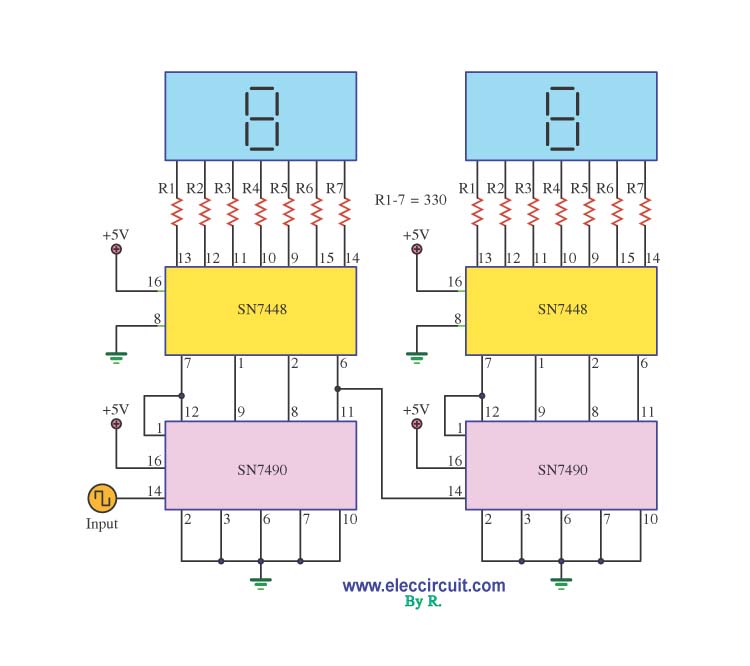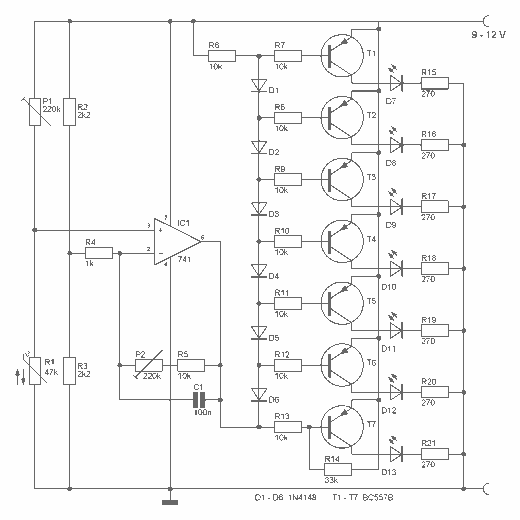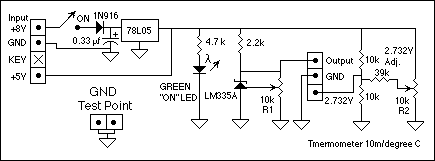
digital thermometer
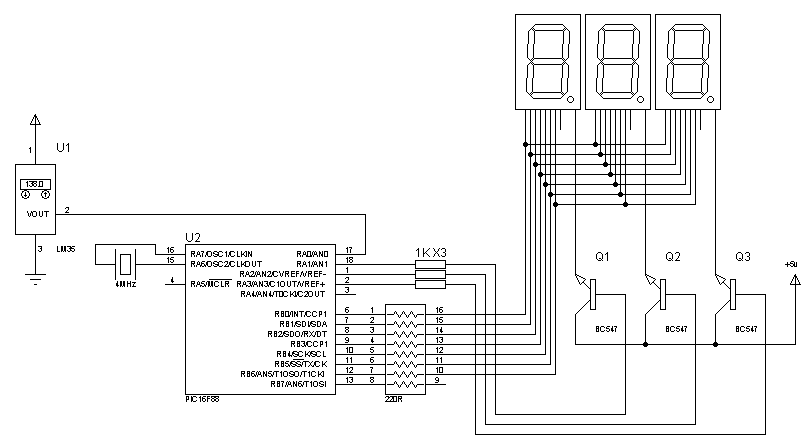
Assistance is needed to locate a schematic and code for a digital thermometer utilizing an LM35 temperature sensor and a 7-segment display, capable of measuring temperatures from 0 to 150.5 degrees Celsius. The required code must be included.
The digital thermometer circuit using an LM35 temperature sensor and a 7-segment display is a straightforward yet effective project suitable for various applications. The LM35 is a precision temperature sensor that provides an output voltage proportional to the temperature in degrees Celsius. It has a linear output of 10 mV/°C, making it easy to interface with microcontrollers.
The schematic consists of the following key components:
1. **LM35 Temperature Sensor**: This component is the core of the thermometer. It outputs a voltage that increases linearly with temperature. The output pin is connected to an analog input of a microcontroller (such as an Arduino) for temperature reading.
2. **Microcontroller**: A microcontroller is required to process the analog voltage from the LM35. It converts the voltage to a temperature reading using an Analog-to-Digital Converter (ADC). Popular choices include Arduino Uno or ATmega328 for their ease of use and extensive libraries.
3. **7-Segment Display**: This display consists of multiple LEDs arranged in a figure-eight pattern, allowing for the representation of numerical digits. To display the temperature, a common cathode or common anode 7-segment display can be utilized, depending on the design requirements.
4. **Resistors**: Current-limiting resistors are necessary for the 7-segment display to prevent excessive current from damaging the LEDs. The values of these resistors can typically be calculated based on the supply voltage and the forward voltage of the LEDs.
5. **Power Supply**: A suitable power supply is required to power the circuit. This could be a battery or a regulated DC power supply providing a voltage compatible with both the microcontroller and the 7-segment display.
The code for the microcontroller will involve reading the analog value from the LM35, converting it to a temperature reading, and then displaying that value on the 7-segment display. The code should include proper initialization of the ADC, reading the sensor value, and converting the voltage to temperature using the formula:
Temperature (°C) = (V_out / 10 mV).
The conversion will then be formatted to display on the 7-segment display, which may require multiplexing if multiple digits are used. The implementation can be achieved using libraries available for the selected microcontroller platform, simplifying the programming process.
This project serves as an excellent introduction to interfacing sensors with microcontrollers and displaying data, providing practical experience in electronics and programming.Can someone help me find a schematic and codes about a digital thermometer using a LM35 and 7 segment display(0 - 150.5 degree celcius)..the code must .. 🔗 External reference
The digital thermometer circuit using an LM35 temperature sensor and a 7-segment display is a straightforward yet effective project suitable for various applications. The LM35 is a precision temperature sensor that provides an output voltage proportional to the temperature in degrees Celsius. It has a linear output of 10 mV/°C, making it easy to interface with microcontrollers.
The schematic consists of the following key components:
1. **LM35 Temperature Sensor**: This component is the core of the thermometer. It outputs a voltage that increases linearly with temperature. The output pin is connected to an analog input of a microcontroller (such as an Arduino) for temperature reading.
2. **Microcontroller**: A microcontroller is required to process the analog voltage from the LM35. It converts the voltage to a temperature reading using an Analog-to-Digital Converter (ADC). Popular choices include Arduino Uno or ATmega328 for their ease of use and extensive libraries.
3. **7-Segment Display**: This display consists of multiple LEDs arranged in a figure-eight pattern, allowing for the representation of numerical digits. To display the temperature, a common cathode or common anode 7-segment display can be utilized, depending on the design requirements.
4. **Resistors**: Current-limiting resistors are necessary for the 7-segment display to prevent excessive current from damaging the LEDs. The values of these resistors can typically be calculated based on the supply voltage and the forward voltage of the LEDs.
5. **Power Supply**: A suitable power supply is required to power the circuit. This could be a battery or a regulated DC power supply providing a voltage compatible with both the microcontroller and the 7-segment display.
The code for the microcontroller will involve reading the analog value from the LM35, converting it to a temperature reading, and then displaying that value on the 7-segment display. The code should include proper initialization of the ADC, reading the sensor value, and converting the voltage to temperature using the formula:
Temperature (°C) = (V_out / 10 mV).
The conversion will then be formatted to display on the 7-segment display, which may require multiplexing if multiple digits are used. The implementation can be achieved using libraries available for the selected microcontroller platform, simplifying the programming process.
This project serves as an excellent introduction to interfacing sensors with microcontrollers and displaying data, providing practical experience in electronics and programming.Can someone help me find a schematic and codes about a digital thermometer using a LM35 and 7 segment display(0 - 150.5 degree celcius)..the code must .. 🔗 External reference
